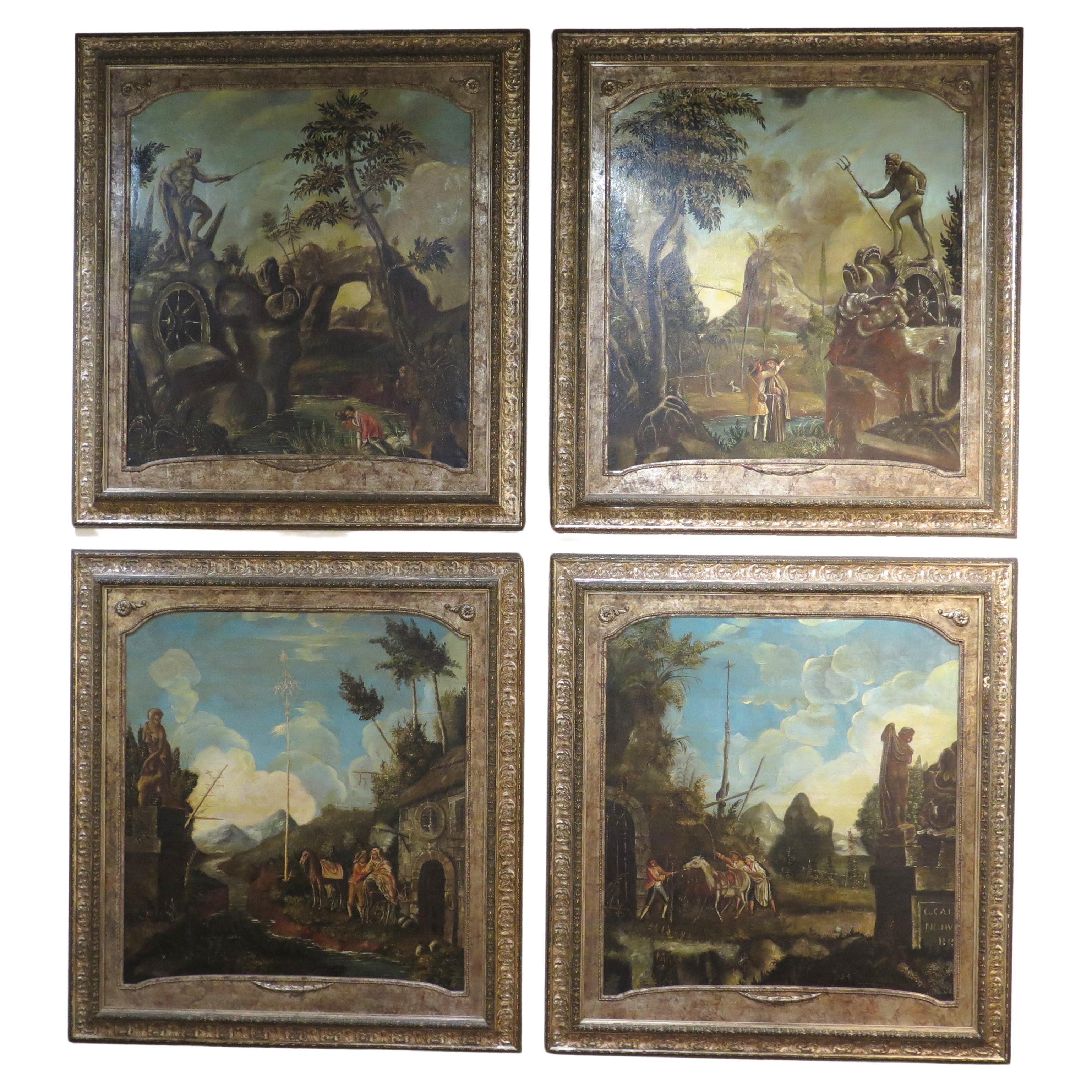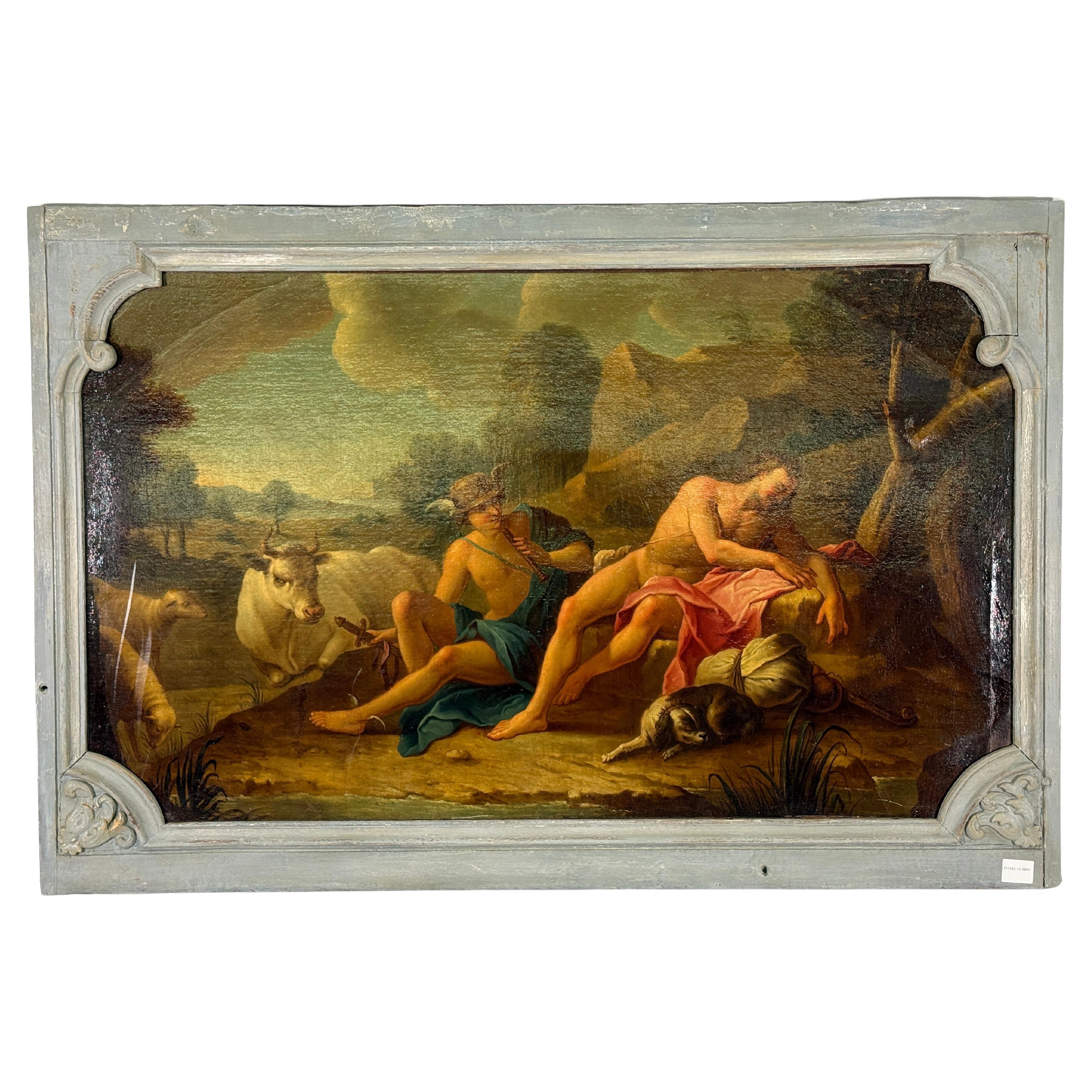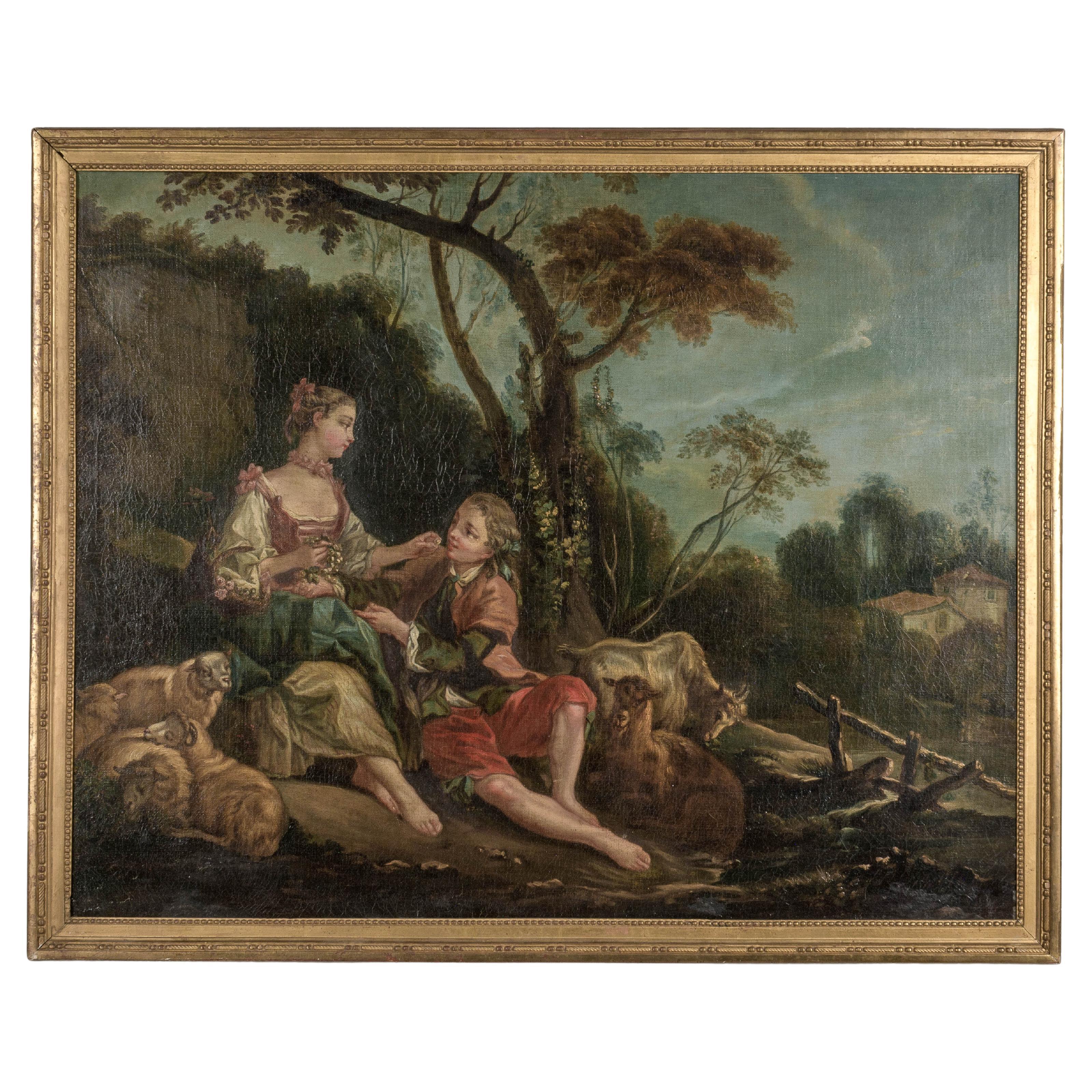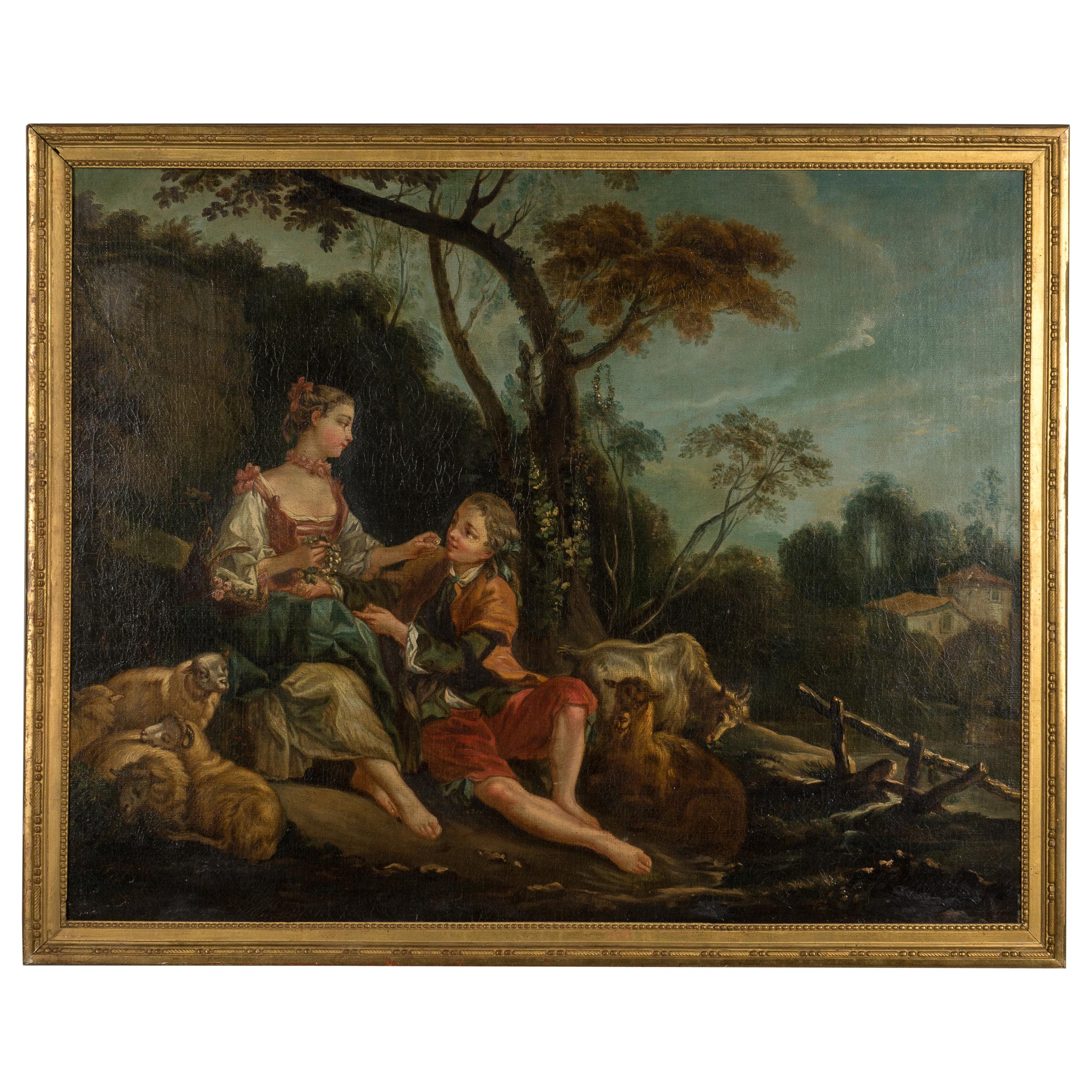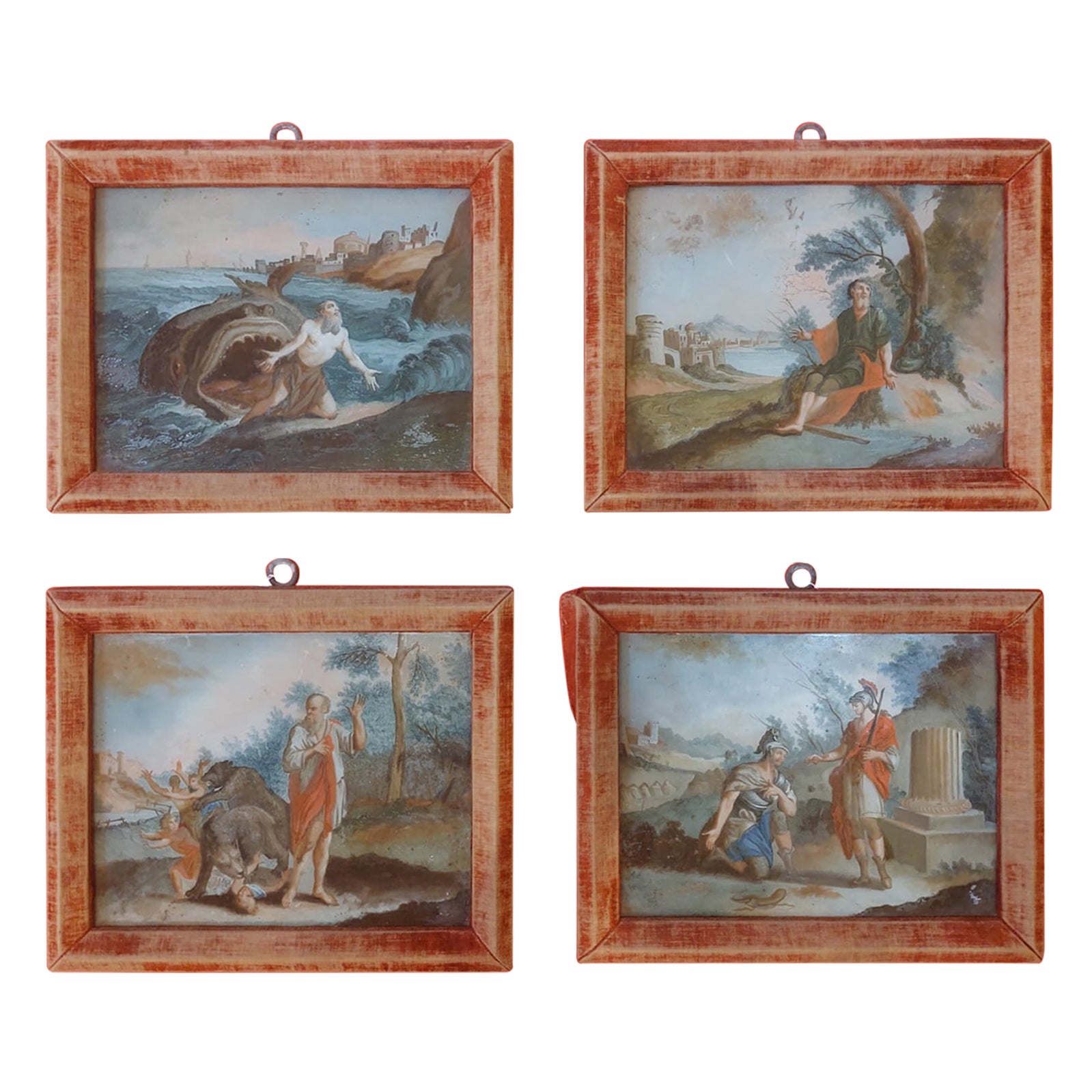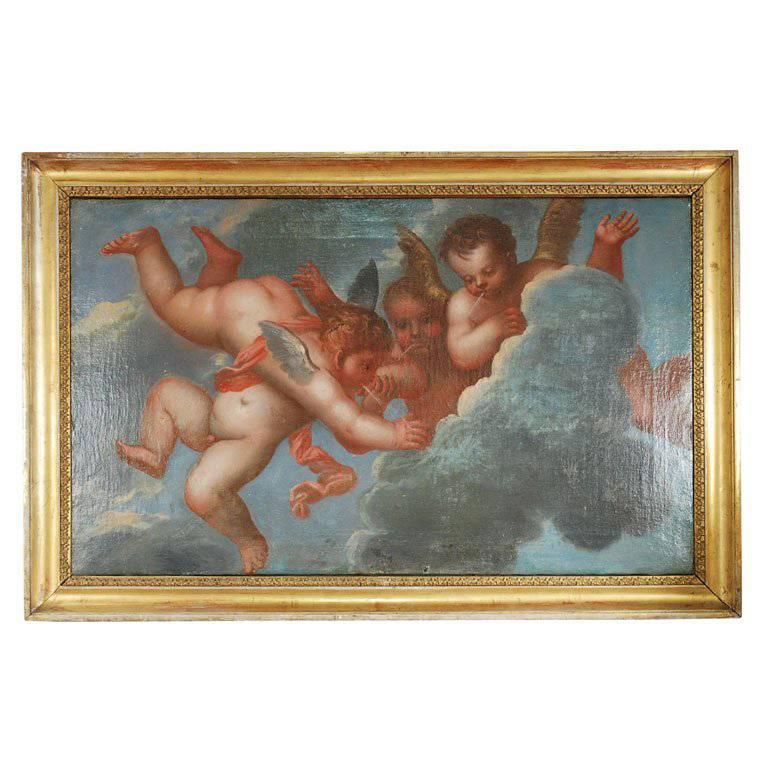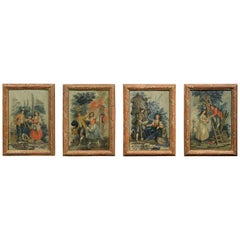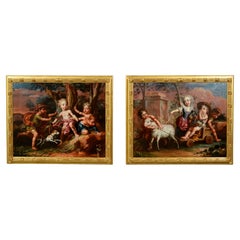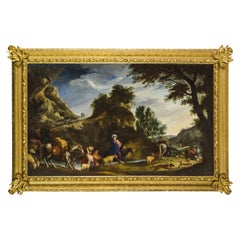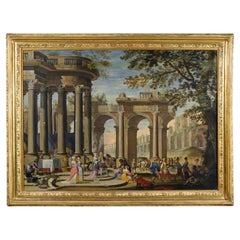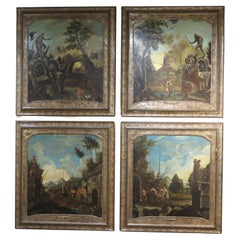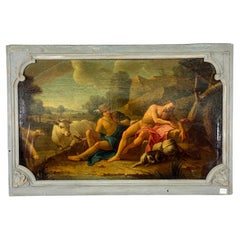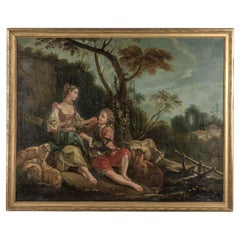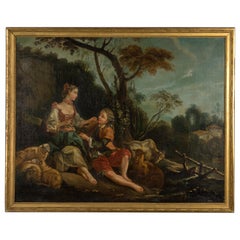Items Similar to 17th century, Four French Paintings Depicting The Seasons, Circle of Noel Coypel
Want more images or videos?
Request additional images or videos from the seller
1 of 21
17th century, Four French Paintings Depicting The Seasons, Circle of Noel Coypel
$38,939.67
£28,982.68
€32,500
CA$53,337.61
A$59,323.06
CHF 30,976.66
MX$721,898.58
NOK 395,619.22
SEK 371,021.04
DKK 247,411.15
Shipping
Retrieving quote...The 1stDibs Promise:
Authenticity Guarantee,
Money-Back Guarantee,
24-Hour Cancellation
About the Item
Four paintings depicting the seasons, circle of Noel Coypel, second half of the 17th century
Oil on canvas
Measures: cm W 37 x H 46 x D 2 cm (canvas)
The four paintings, presented in carved and gilded wooden frames in the eighteenth century style, are stylistically related to the work of painter Noël Coypel (Paris, 25 December 1628 - 24 December 1707).
They represent the allegory of the four seasons. Each canvas has at its centre a depiction of a young girl, dressed in classic taste, surrounded by lively putti who play and offer her the products of the land according to the four seasons. The spring season sees triumphs of flowers adorn the young woman, while garlands and large baskets are full of delicate and colorful florets with which the children play and entertain themselves. Summer sees the maiden sitting and adorned with ears of corn, holding a sickle. Among the putti, there are those who sleep, those who play happily, who lift the wheat and who arrive in a boat from a lake depicted in the background. Some fruits, carrots and pumpkins are placed in the foreground on a wicker basket, to remember the abundance of the earth’s products in the hot season of the sun. Autumn follows, focused on the vine and grape harvest: a putto collects it, one pours it into a vat, another plays with it on the ground. A boy holding a bottle of wine offers the young woman a glass, her hair adorned with a wreath of vines. Finally winter: the young woman is covered by a putto with a soft red coat. In the foreground, the putto rolls over from the basket of wicker cabbages, pumpkins, turnips and spring onions, characteristic of the cold season. On the left, three putti are trying to light a fire, a clear reference to the cold temperatures of the period. The subjects are all contextualized in different outdoor gardens, with rich description of vegetation that varies according to the season, landscapes with rivers, waterfalls, Cities in the background, architectural elements and other details that help to harmonize and balance the compositions. The setting of the figures helps the observer’s gaze to move through the seasons, from left to right: the figure impersonating spring welcomes the viewer’s gaze and, turning to the right, accompanies him in summer. This one is slightly seated facing to the left and looks towards the following season, autumn. Here the face is placed to the left but the body, slightly rotated to the right, leads the gaze to the last season. Winter welcomes the sequence completely facing left. Chromium is played on bright, saturated and changing tones, well balanced.
The works are stylistically close to the work done by Coypel for the apartment of King Louis XIV in the Trianon palace at Versailles.
Noël Coypel was an illustrious French painter and decorator, a member of the classical school and a follower of Poussin. At a young age he joined the firm of Charles Errard, which allowed him to establish himself and obtain commissions from the court. He painted several paintings for the king’s apartments at the Louvre, for Cardinal Mazarin and for the ceilings of the queen’s apartment at the wedding of Louis XIV.
Member of the Académie royale de peinture et de sculpture from 1663, he became a professor in 1664. He directed the Academy of France in Rome, where he worked from 1673 to 1675. Upon his return to France, he was appointed director of the Royal Academy of Painting on 13 August 1695. Coypel worked again for King Louis XIV and took part in the decoration of the Château de Versailles under the direction of Charles Le Brun, the parliament of Rennes, the Tuileries Palace and the Hôtel des Invalides (1700-1707).
The four works are very pleasant and decorative, of good artistic quality and well preserved, easily appreciated in all environments, and large enough to be exhibited in groups.
- Similar to:Noël Coypel (Painter)
- Dimensions:Height: 22.64 in (57.5 cm)Width: 19.3 in (49 cm)Depth: 1.78 in (4.5 cm)
- Style:Baroque (Of the Period)
- Materials and Techniques:
- Place of Origin:
- Period:Late 17th Century
- Date of Manufacture:Late 17th Century
- Condition:Wear consistent with age and use.
- Seller Location:IT
- Reference Number:1stDibs: LU4405242080732
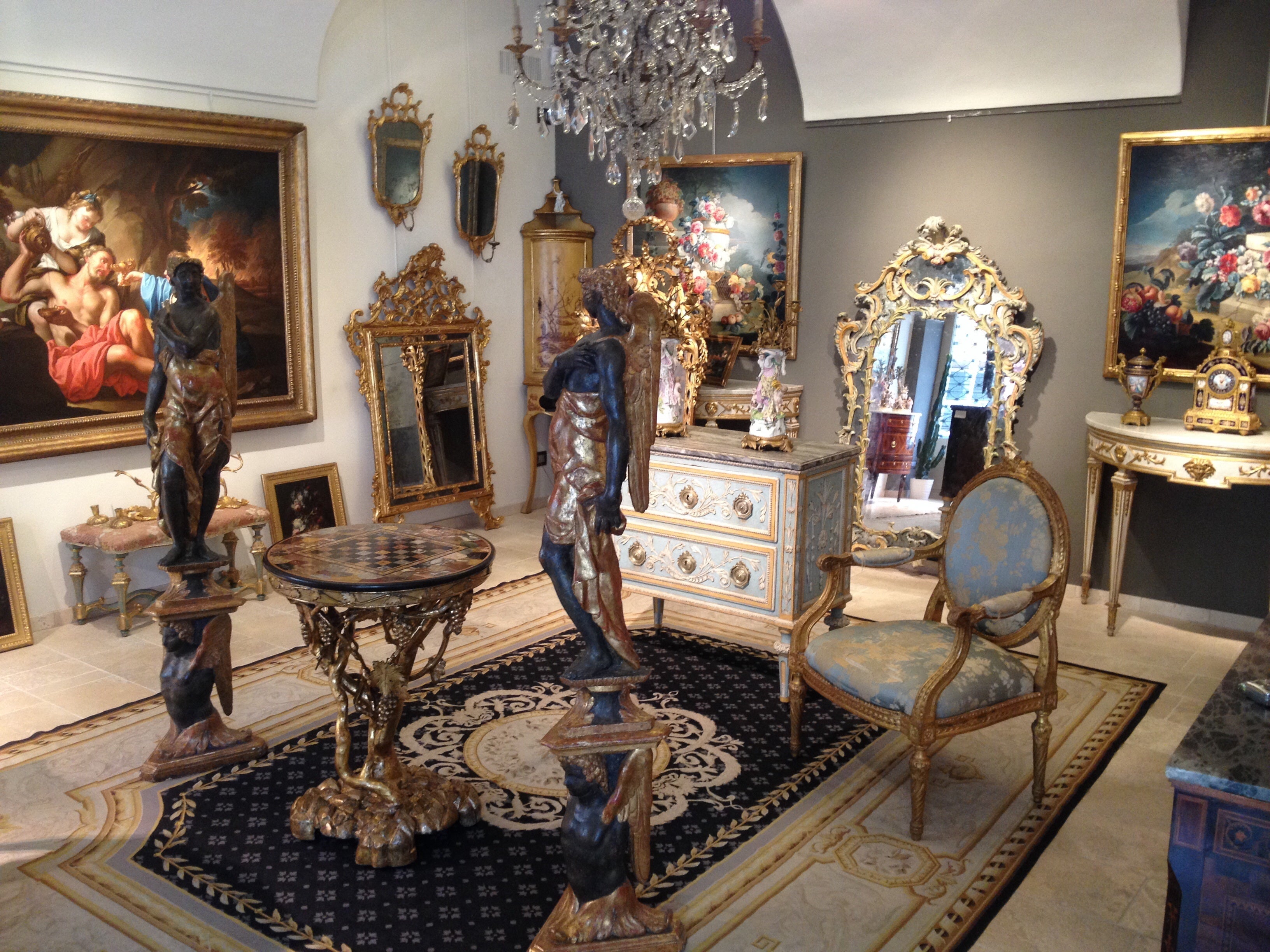
About the Seller
5.0
Platinum Seller
Premium sellers with a 4.7+ rating and 24-hour response times
Established in 1980
1stDibs seller since 2019
56 sales on 1stDibs
Typical response time: <1 hour
- ShippingRetrieving quote...Shipping from: Italy
- Return Policy
Authenticity Guarantee
In the unlikely event there’s an issue with an item’s authenticity, contact us within 1 year for a full refund. DetailsMoney-Back Guarantee
If your item is not as described, is damaged in transit, or does not arrive, contact us within 7 days for a full refund. Details24-Hour Cancellation
You have a 24-hour grace period in which to reconsider your purchase, with no questions asked.Vetted Professional Sellers
Our world-class sellers must adhere to strict standards for service and quality, maintaining the integrity of our listings.Price-Match Guarantee
If you find that a seller listed the same item for a lower price elsewhere, we’ll match it.Trusted Global Delivery
Our best-in-class carrier network provides specialized shipping options worldwide, including custom delivery.More From This Seller
View All19th Century Four Italian Oil on Panel with Allegory of the Four Elements
Located in IT
19th century four Italian oil on panel with allegory of the four elements
Dimensions with frame: cm H 34.5 x L 25; only the table: cm H 29 x L 20.5
The funny oil on panel, by an artist active in Piedmont, in the north of Ital, in the first half of the 19th century, represent the allegory of the four elements of the Earth.
They are inspired by the group of four etching prints of circa 1730, made to a design by Rococo painter Jacopo Amigoni (Naples 1682- Paris 1752) and engraved in Venice by Joseph Wagner...
Category
Antique 19th Century Italian Rococo Paintings
Materials
Wood
18Th Century, Pair of Italian Allegory Paintings By Vittorio Amedeo Rapous
By Vittorio Amedeo Rapous
Located in IT
18Th Century, Pair of Italian Allegorical Paintings By Vittorio Amedeo Rapous
Pair of paintings depicting the Allegory of Spring with putti and the Allegory of Autumn with putti, Vi...
Category
Antique Late 18th Century Italian Rococo Paintings
Materials
Canvas
$36,423 Sale Price
20% Off
17th Century, Italian Painting by Pier Francesco Cittadini, Jacob and his Family
Located in IT
Pier Francesco Cittadini (Milan, 1616-Bologna, 1681)
"Jacob and his family go to Egypt"
Oil on canvas, cm 109 x 190 (canvas only)
The valuable painting, made in oil on canvas, depicts Jacob and his family go to Egypt and we believe it can be, given the high quality painting, autograph work of Italian Pier Francesco Cittadini (Italy Milan, 1616 - Bologna, 1681) made after 1647. The work, in excellent condition is accompanied by a coeval frame in wood finely carved and golden.
The scene depicted, which was confused with the Flight to Egypt in the past years, is instead identified with the biblical episode of Jacob’s journey. In the foreground, reading the painting from left to right, we see a caravan composed of animals, including donkeys, dromedaries, goats, dogs and horses and people, women, men and slaves, who carry on their journey along the banks of a river, following a path that to the right, would seem to lead to the through of a bridge. In addition to the watercourse is described an environment characterized by large rocks and impervious come far to cover the entire verticality of the canvas. On the left, in the distance, we see the tail of the caravan that runs along the steep path. Large trees enliven and harmonize the environment, as well as white and grey clouds characterize the predominantly clear sky and illuminated on the right by sunlight.
The story is told in the Bible, Book of Genesis, 30, 25, passage in which is described the flight of Jacob from Haran after the contrasts with Laban, father of his wife Rachel. Jacob is the third great patriarch of the Bible. From his descendants originate the twelve generations of the people of Israel. He is the son of Isaac and Rebekah, who led him to flee from the wrath of Esau to Haran to seek refuge from his brother, Laban. At his uncle’s house Jacob met his daughter Rachel. As soon as he saw his cousin, Jacob was taken. Jacob will stay seven years in the service of Laban to marry his beloved Rachel. But Laban, with a deception, will give him in marriage first Lia, the least beautiful eldest daughter, and only after another seven years the splendid Rachel. From his first wife he will have several children, while Rachel will give birth to the beloved son, Joseph, who will become viceroy of Egypt.
After years of service, Jacob asked to be paid with every dark-coloured garment among the sheep and every spotted and dotted garment among the goats. Laban accepted and sent away from his sons all the leaders of that kind. So Jacob took fresh branches of poplar, almond and plane tree, and flayed them, and put them in the troughs. The optical suggestion induced the goats and the sheep to conceive and give birth to dark, striped and dotted garments. He also ensured that all the strongest and healthiest leaders of the flock of Laban would drink near the barked branches, thus assuring a genetic superiority to his part of the flock. His flocks grew numerous and strong and he became richer than his relative, arousing envy. It was clear that Laban would not respect him much longer. At the suggestion of the Lord, Jacob decided to return to Canaan. Trying to avoid any possible dispute, he left with his family while Laban was absent for shearing sheep. But when, three days later, his uncle returned home, he became angry, feeling offended because Jacob had gone secretly and had not allowed him to greet his daughters and grandchildren. In addition, his teraphim, statuettes, or idols, which depicted the family deities, had disappeared. After 7 days of pursuit, Laban and his men reached Jacob’s group on Mount Gilead, in the mountainous region west of the Euphrates River, where his uncle and grandson had a stormy conversation. The younger man was outraged at being accused of stealing idols and told Labano to rummage through his family’s tents at will. Neither of them could know or even imagine that it was Rachel who took the idols and hid them in the saddle of the camel. During the search, she sat down firmly on the saddle, apologizing for not being able to get up, «because I usually have what happens to women» (Gen 31:35). So the loot wasn’t discovered.
The author of this work was inspired by the composition of an engraving by Stefano Della Bella (1610-1664) of circa 1647. The engraving by Stefano della Bella bears the title "Iacob sur ses vieux jours quitte sans fascherie pour voir son filz Ioseph, sa terre et sa patrie" and is signed on the bottom left "Stef. of the Beautiful In. et fe." while on the right it is declared "Cum privil. Regis", that is with license of the king.
Stefano Della Bella (Italy - Florence, May 18, 1610-Florence, July 12, 1664) was born in a family of painters, sculptors and goldsmiths and was left early orphan of his father sculptor, he dedicated himself first to the art of goldsmith at the school of Giovanni Benedetto Castiglione and Gasparo Mola, then turning his attention to drawing and engraving. He soon began drawing figures and copying the etchings of Jacques Callot, which inspired his early works. Under the protection of the Medici, in particular of Don Lorenzo, cadet son of Grand Duke Ferdinand I, Della Bella has the opportunity to make study trips to Rome, where he stayed from 1633-1636; In Rome he met French engravers and publishers of prints such as Israël Henriet and François Langlois, who influenced his decision to move to Paris in 1639, four years after the death of Callot. In Paris he soon reached, thanks to the engravings commissioned by Cardinal Richelieu, the success also worldly; he frequented courtiers, theatre artists and writers, while refusing too oppressive honors. In 1646-1647 he continued his travels in the Netherlands to Amsterdam, Antwerp and Dordrecht. He returned to Florence in 1650 and resumed working under the protection of the Medici court, working for his patrons. In 1656 he became a member of the Academy of Apatists.
The painting object of this study is reasonably attributable to Pier Francesco Cittadini, or Pierfrancesco Cittadini, called the Milanese or the Franceschino (Italy - Milan, 1616-Bologna, 1681) as some exemplary stylistic comparisons proposed to follow can prove.
Pier Francesco Cittadini was an Italian baroque painter, mainly active in Bologna.
His artistic training first took place with the painter Daniele Crespi...
Category
Antique Mid-17th Century European Baroque Paintings
Materials
Canvas, Giltwood
18th Century, Painting Architectural Capriccio, att. to Isaac De Moucheron
Located in IT
18th Century, Painting with Architectural Capriccio with figures, attributed to Isaac De Moucheron
Measures: canvas cm H 108 x L 152; with frame cm H 132 x L 176 x 8
The painting i...
Category
Antique 18th Century Dutch Baroque Paintings
Materials
Canvas
18th century, Couple of Italian Paintings Capriccio with Mythological Scenes
Located in IT
Couple of architectural capriccio with mythological scenes, oil on canvas, painter from Bologna active in the 18th century
The two large and valuable pantings depict two architectur...
Category
Antique Early 18th Century Italian Baroque Paintings
Materials
Canvas
18th Century, Baroque Austran Painting by August Querfurt
Located in IT
August Querfurt (1696, Wolfenbüttel - 1761, Vienna)
Farmers and villagers at the entrance of a village
Oil on panel , cm 38,5 x 51. frame 66 x 53,5 x 4,5 cm
The valuable painting, ...
Category
Antique 18th Century Austrian Baroque Paintings
Materials
Wood
You May Also Like
A Set of Four Late 18th Century / Early 19th Century Allegorical Paintings
Located in Dallas, TX
A set of four (4) Late 18th Century / Early 19th Century allegorical paintings amongst landscapes amongst classical ruins, relived frames contemporary pictures most likely. Italian.
...
Category
Antique Early 18th Century Italian Neoclassical Decorative Art
Materials
Canvas
18th Century French Greco Roman Mythological Painting
Located in Scottsdale, AZ
18th Century French Greco Roman Mythological Painting
Beautiful & Large piece purchased in France.
This scene was taken from the Metamorphosis of Ovid.
Inner Frame Dimensions: Hei...
Category
Antique 18th Century French Greco Roman Paintings
Materials
Wood, Paint
18th Century French Baroque Oil Painting
Located in Winter Park, FL
A late 18th century French painting depicting a romantic couple in a pastoral setting. Oil on canvas. Unsigned. Original gilded wood frame. Small repair to canvas in the upper left c...
Category
Antique Late 18th Century French Baroque Paintings
Materials
Giltwood, Paint, Canvas
18th Century French Oil Painting
Located in Winter Park, FL
A late 18th century French painting depicting a romantic couple in a pastoral setting. Oil on canvas. Unsigned. Original gilded wood frame. Small repair to canvas in the upper left c...
Category
Antique Late 18th Century French French Provincial Paintings
Materials
Giltwood, Paint
Four Neapolitan underglaze paintings with frame
Located in Milano, IT
The four 18th-century Neapolitan posthumously framed under-glass paintings depict biblical scenes from The Book of Jonah, specifically:
1. Jonah vomited by the Whale;
2. Elisha and t...
Category
Antique 18th Century Italian Baroque Paintings
Materials
Glass, Wood
$7,188 / set
17th-18th Century Venetian Painting
Located in Pembroke, MA
Venetian School painting of four angels, allegorically depicting the variable winds of change and time. Unsigned, believed to be by a follower of Pietro Li...
Category
Antique 17th Century Italian Baroque Paintings
Materials
Giltwood, Canvas
$9,500 Sale Price
39% Off
More Ways To Browse
King Louis Xiv
Large Wooden Boat
French Wedding Dress
17th Century Wine Glasses
Ear Of Corn
Wicker Wine Bottle
Antique Glass Pumpkins
Four Seasons Putti
Onion Bottle
Corn Maiden
Vintage Italy Calendar
Vintage Kitchen Bench
Vintage Pedestal Dish
Vintage Water Globes
Vintage Wicker Chest
Vintage Wire Outdoor Chairs
Wall Mounted Sword
Washing Clothes
